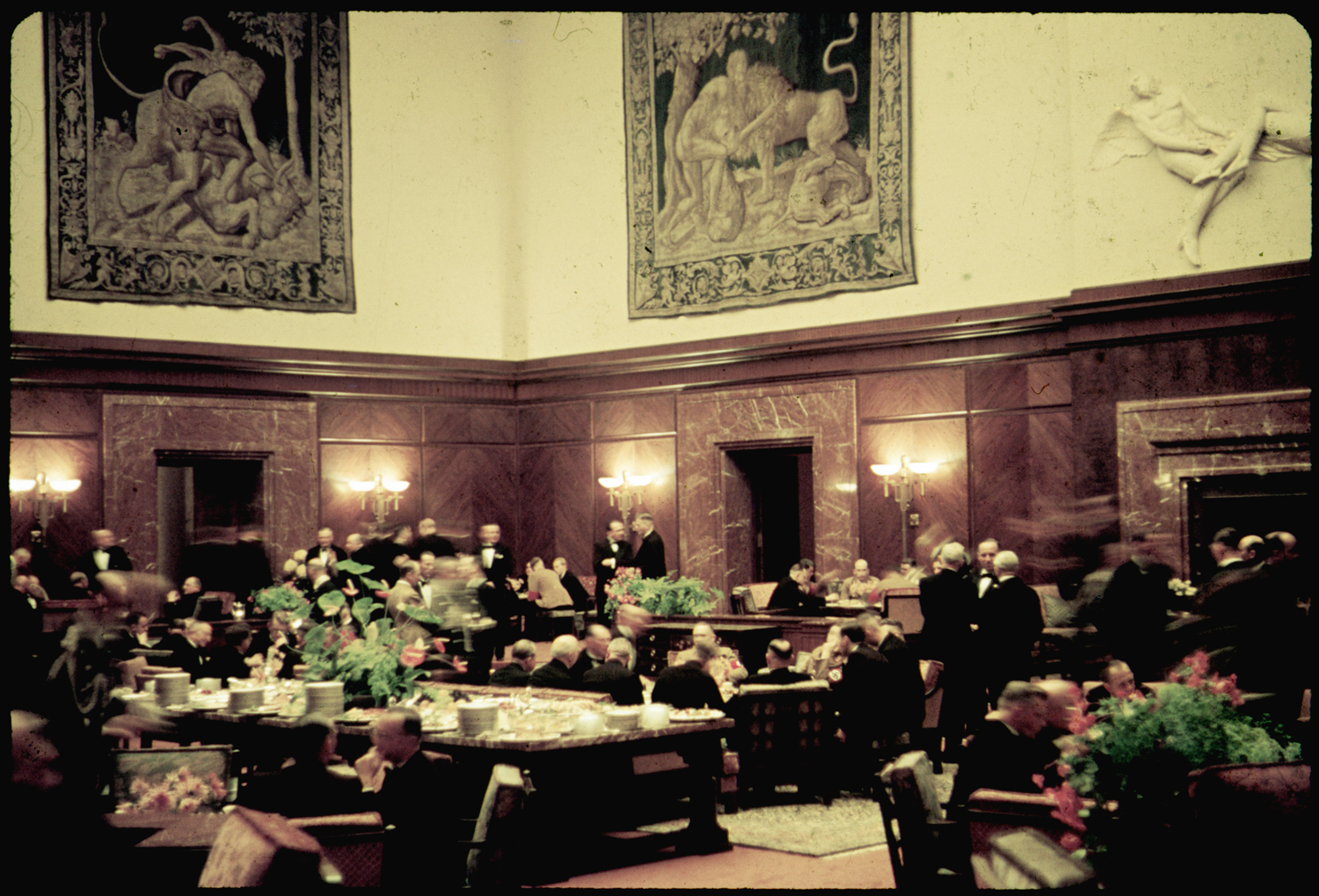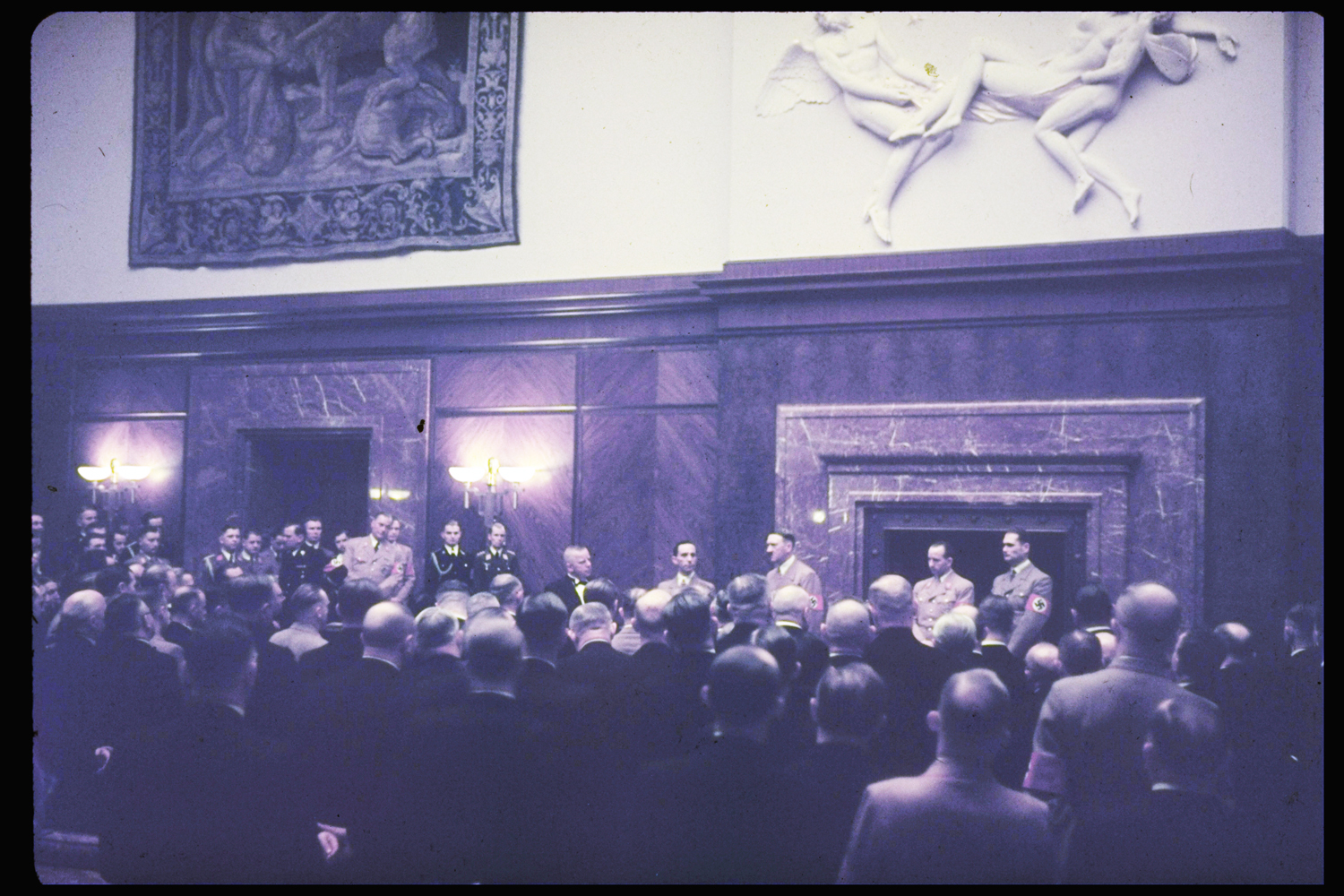
The night of November 9-10, 1938, forever after known as Kristallnacht (“Night of Broken Glass”), remains one of the most shocking eruptions of violence, outside of wartime, that modern Europe has ever seen. In the course of several hours, as German paramilitary thugs and non-Jewish citizens rampaged through cities in Germany and Austria, destroying Jewish-owned stores, torching centuries-old synagogues and killing scores of innocents, the world was given its most graphic glimpse yet of the depraved nature of Hitler’s Reich.
State-sanctioned persecution of the Jews in Germany—already intense by the mid-1930s—was, with Kristallnacht, no longer merely legislative. The violence implicit in the 1935 Nuremberg Laws, for example, that had stripped Jews of German citizenship was now an explicit tool in a war against Jews, homosexuals, Slavs, pacifist Catholics and other “non-Aryans” and convenient scapegoats. With arson, vandalism and open murder the green-lit expressions of brutality in Hitler’s Germany, both World War II and the escalation of the Final Solution were inevitable.
The very next day, in fact, on November 11, 1938, both Hitler and his propaganda minister, Joseph Goebbels, appeared at a press conference for foreign correspondents in Munich—an event chronicled, in color, by Hitler’s personal photographer, Hugo Jaeger. There, displaying a cynicism extraordinary even for a high-ranking Nazi, Goebbels characterized the Kristallnacht pogrom as an understandable, “spontaneous” eruption of Teutonic anger against Jews:
It is an intolerable state of affairs [Goebbels told members of the press] that within our borders and for all these years hundreds of thousands of Jews still control whole streets of shops, populate our recreation spots and, as foreign apartment owners, pocket the money of German tenants, while their racial comrades abroad agitate for war against Germany and gun down German officials.
At least some of the non-German press were having none of it. The Times of London, for instance, noted that “no foreign propagandist bent upon blackening Germany before the world could outdo the tale of burnings and beatings, of blackguardly assaults on defenseless and innocent people, which disgraced that country yesterday.”
But outrage from the likes of England, America and other countries that, in short order, would be at war with the Reich was far too little and came too late to slow the anti-Semitic juggernaut. Two days after Kristallnacht, Germany’s Jews were fined roughly a billion Reichsmark (about $400 million in 1938) for “property damaged in the rioting.”



More Must-Reads from TIME
- Donald Trump Is TIME's 2024 Person of the Year
- Why We Chose Trump as Person of the Year
- Is Intermittent Fasting Good or Bad for You?
- The 100 Must-Read Books of 2024
- The 20 Best Christmas TV Episodes
- Column: If Optimism Feels Ridiculous Now, Try Hope
- The Future of Climate Action Is Trade Policy
- Merle Bombardieri Is Helping People Make the Baby Decision
Contact us at letters@time.com